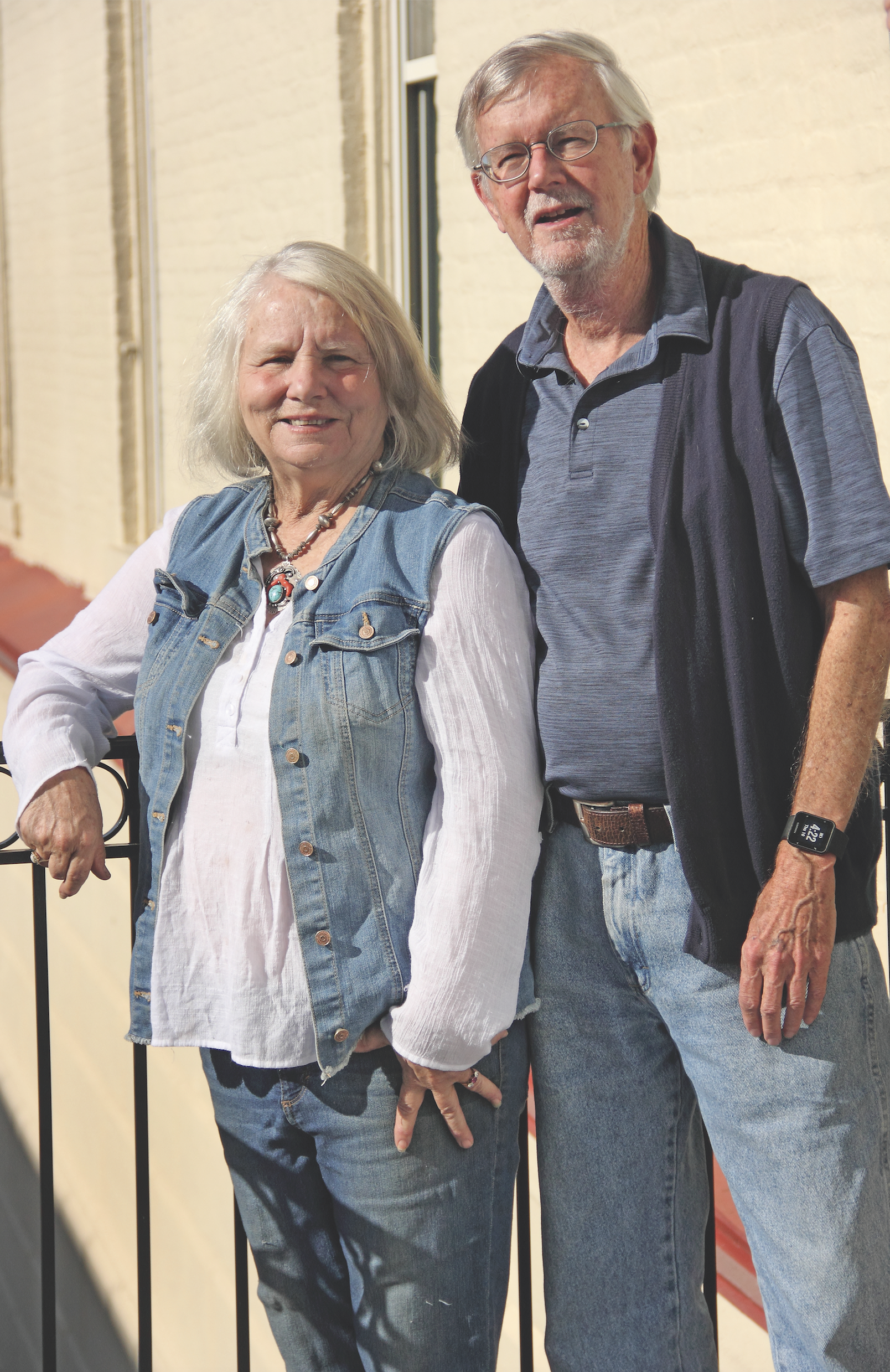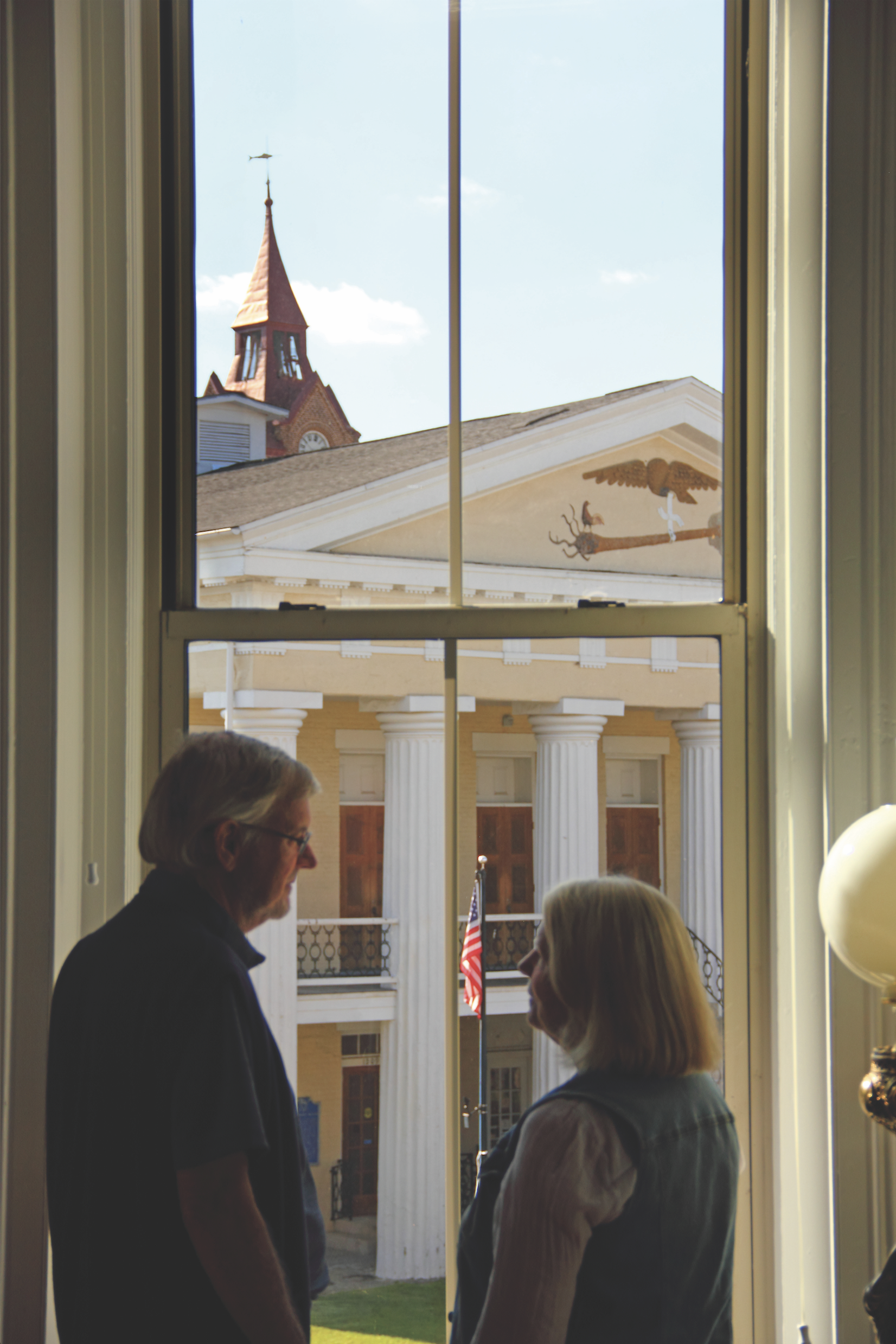The “New” Old Newberry Hotel
If you stand on the square in Newberry and look around, you can see two towers on two historic and iconic Newberry buildings, the Newberry Opera House and the Old Newberry Hotel. The same architect G. L. Norman designed them both. The Newberry Opera House was built in 1881. This version of the hotel with the corner spire was built in 1878 after a fire destroyed an older hotel on the property. The architect deliberately tied them together with the two towers. The Newberry Hotel needed visitors. Visitors who came to the Opera House needed a place to stay. Both buildings and their towers were emblematic of a time of recovery and renewal in the history of Newberry County.
The Newberry Opera House was renovated and reopened in 1998, ushering in two decades and counting of renewal in downtown Newberry. In 1998 the matching tower of the Newberry Hotel, which had been closed in the 1950s, was like a sore thumb sticking up on the corner of Caldwell and Main Street. It reminded the community that 28,000 square feet were vacant and decaying, except for the store fronts on Main Street.
Since that time there has been talk of many possible buyers of the hotel. Rumors abounded. Developers came and went from far and wide with varying visions of modern boutique hotels, spas, and apartments. The potential buyers found it too small or too large, never just right. Most said it would be too expensive to renovate. Many said Newberry was too small to support such a venture. None had any idea of the history of the building and its visual importance to the downtown. The tower remained neglected and empty.
All of this worried Joe and Mary McDonald. They love their adopted town and have worked for years in various ways to support and enhance the arts and the lives of all people in the community. The McDonalds came to Newberry in 1981 from Knoxville, where Joe had earned his doctorate in sociology. Newberry College had hired him to teach sociology. They moved here with two young children and bought an old dilapidated house on Harper Street with great potential. There were not many houses to choose from back then. This was the time in Newberry’s past when very few old family homes were being sold to folks not from here.
Mary knew that the Harper Street house had good bones and enormous potential, even the dirt yard with no landscaping had potential. She grew up in an old, beautiful 1912 home with antiques, art and history. She can see past dilapidated. She loves fixing up something old with character. It’s what she knows. It’s what she loves. It’s what she did for their now beautiful house on Harper St. It became their home, and Joe and Mary and their family became a part of Newberry.
Joe enjoyed his work at the college. He liked working with the students. He also worked in the community with the Literacy Council and other agencies when there was a need. Joe is an unabashed believer in helping his community. He taught his students the importance of caring, as well as book learning.
When Newberry College opened the thrift store Shop Around the Corner in 1997, Joe was the faculty member who worked with the community project. Students provided most of the labor. Joe said, “While the students were working, they were learning about community needs in a real way and about the value of community service on a personal level.”
Mary also supported the project as the manager until 2006 when she followed her passion and opened a downtown antique shop called As Time Goes By. The thrift store continued to serve the community until 2017.
When Joe retired from the College in 2014, he became even more involved with the community, spending more time with the Literacy Council and other projects. He also continued to learn more about the history of the town.
With their personal interests and their love of history and community, Joe and Mary were concerned about what these coming and going potential developers might do to the Newberry Hotel. Would these potential developers destroy the historic look of the hotel or even destroy its connection to the Opera House? Would they throw out the Literacy Council and the Newberry Arts Center? Would they just look at numbers and not consider the impact on the downtown? They were worried about the 28,000 square feet of abandoned space in the center of their town. Very worried.
Gayle Metts, who was the agent for the Newberry Hotel through Newberry Realty at the time, knew that Mary and Joe recognized the potential for the hotel and had the backgrounds, skills, and resources to renovate the space in a sensitive manner. Gayle knew they supported the burgeoning art scene and recognized the importance of downtown. She stayed in touch with the McDonalds, encouraging them to buy the property. They thought seriously about it, even tried to convince others to partner with them on the project to no avail.
One day Gayle made an offer from Newberry Realty they could not refuse. Mary said, “We discussed it and then we had a CRAZY moment and we said, ‘Let’s do it.’” Joe smiled and nodded, “We weren’t looking for this.” THIS was obviously looking for them.
This leap of faith may have been crazy, but before it was all finalized they did a very sensible thing. They contacted a friend of theirs in Columbia, Fred Delk. They wanted his input and wisdom. He suggested that they also consult with Richard Burts.
Fred Delk has served for 19 years as the executive director of the Columbia Development Corp., which has worked for the past 30 years to develop the Congaree Vista and the south Columbia area of the city.
Richard Burts is the owner/developer of 701 Whaley St., a restored historic building that now serves as a thriving community center. This historic space includes unique event rental spaces, 701 Center for Contemporary Art, office suites, live/work lofts and other use spaces.
Both Fred and Richard came up and did a walk through with Joe and Mary of the Old Newberry Hotel. They listened to Joe and Mary’s ideas, gave advice, estimated costs, and basically told them they weren’t that crazy.
Mary and Joe also went down to 701 Whaley to visit this restored multi-purpose space. Both Mary and Joe said that the support and ideas from Fred and Richard gave them confidence and courage.
It is confidence and courage they have needed to draw on during the last two years of renovations.
In the beginning, their vision was clear, their energy was high. They began assembling a team using local companies whenever possible, like Cannon Associates, West Electric and Whitaker Floor Covering. While other companies who were a part of the project came from out of county, such as Columbia architectural firm Architrave that provided design and oversight.
Mary and Joe knew they were going to have a mixed use building like 701 Whaley in Columbia. There would be apartments, short-stay rooms, retail, office and artist spaces, special meeting rooms, and event venue space including the courtyard. They also knew that they wanted to be able to offer the venue space as a whole for large events or broken into smaller venues when needed.
They knew they were not doing a restoration of the hotel, which had been stripped of many original historic pieces, like door handles, and lighting. They chose to do a renovation that highlighted the long history of the building by leaving some of the original plaster walls, replicating old iron railing, exposing brick walls when possible, as well as restoring the pine floors. Although leaning to 1920’s art deco style, Mary knew she would carefully blend other styles from other historic periods in the hotel’s history. There has been a hotel in this location since the 1820s. The current hotel building was built in 1878.
Joe said, “I was confident Mary could pull this off. She understood what belonged here and the styles that would work in these spaces.” He pointed out that she chose all of the eclectic period furniture and all the art in the public spaces and short-stay rentals. She chose all of the paint colors, often covering large swaths of wall with various choices. The bathrooms in the apartments and short-stay units were all done in a classic black and white tile that transcend period. Bathrooms in the public spaces have unique art deco cement tiles.
Some things they chose not to do for practical reasons. They uncovered fireplaces which had been covered up in a 1920’s restoration. They did not restore them, but rather made them focal points with unique mantles in each room. Mary searched out each of the period mantle that are now throughout the hotel. Some, she already had in her shop. Some, she asked antique pickers that she knew to find for her.
Reuse of parts of the building also has been important. For example, Mary reused marble from an old restaurant that was once in the space as the hearth for all of the decorative fireplaces. The many solid wood doors in the sprawling building have been moved and reused throughout the building. There was a tin ceiling in a hallway that had to be removed. Mary chose to reuse the tiles in the hall outside the Rotary Room, which is located on the first floor. The name of this room reflects its history, as it was the meeting place of Rotary during the 1920s. To Mary and Joe each reused piece is a piece of history saved in this unique building.
As mentioned earlier, many of the original parts of the building had been taken out, including the door hardware. Mary chose to replace the missing hardware with new in an appropriate old style. It looks original.
Mary also chose to go the extra mile for some integral parts of the project. There was beautiful plaster crown molding in one of the lobby rooms, but the back wall was either missing the molding or it was in terrible shape. Mary insisted that it be restored to its original beauty. A Columbia company came up and replaced the molding. They made it in molds from the period, much the same way as it was originally made.
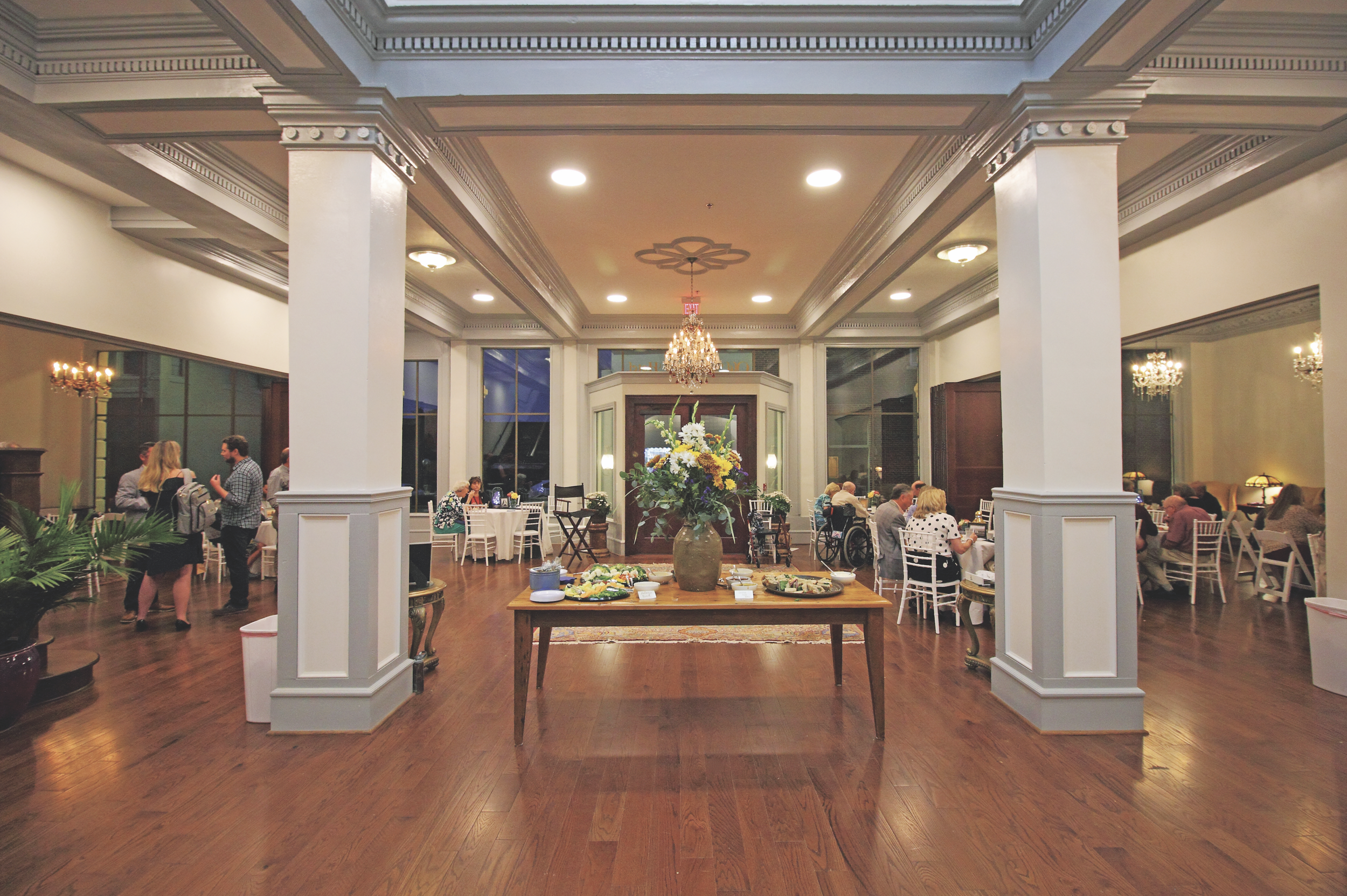
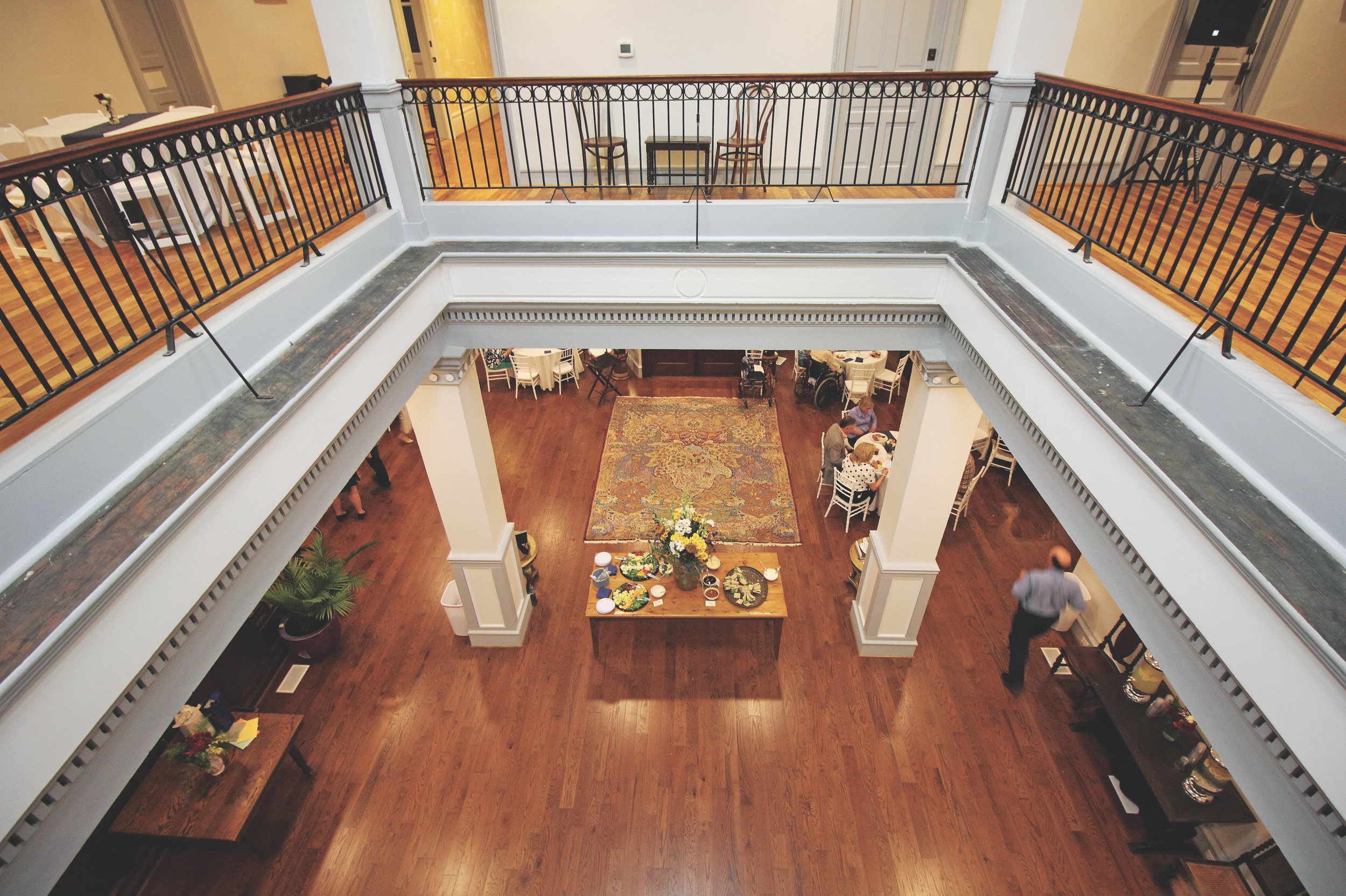
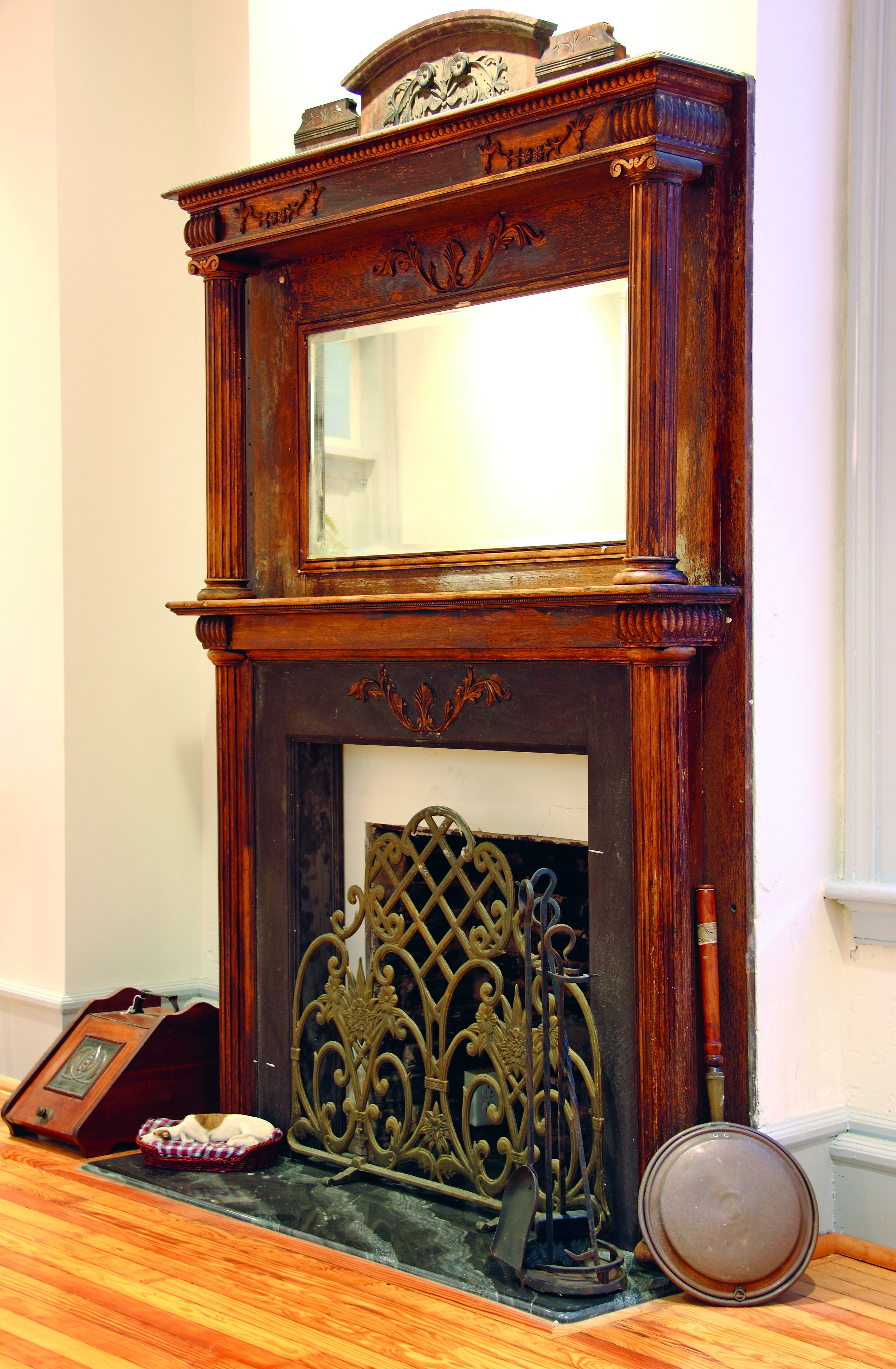
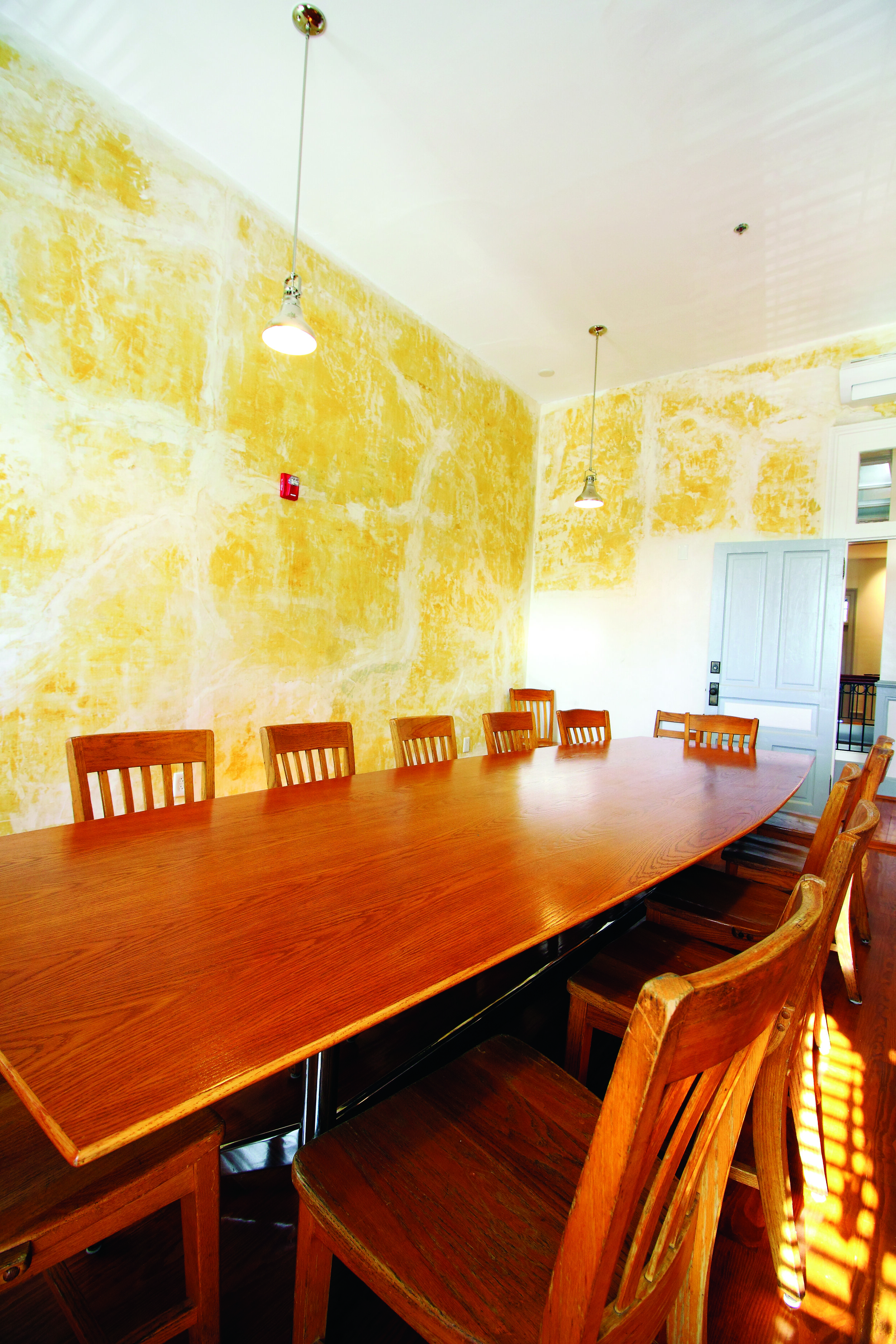
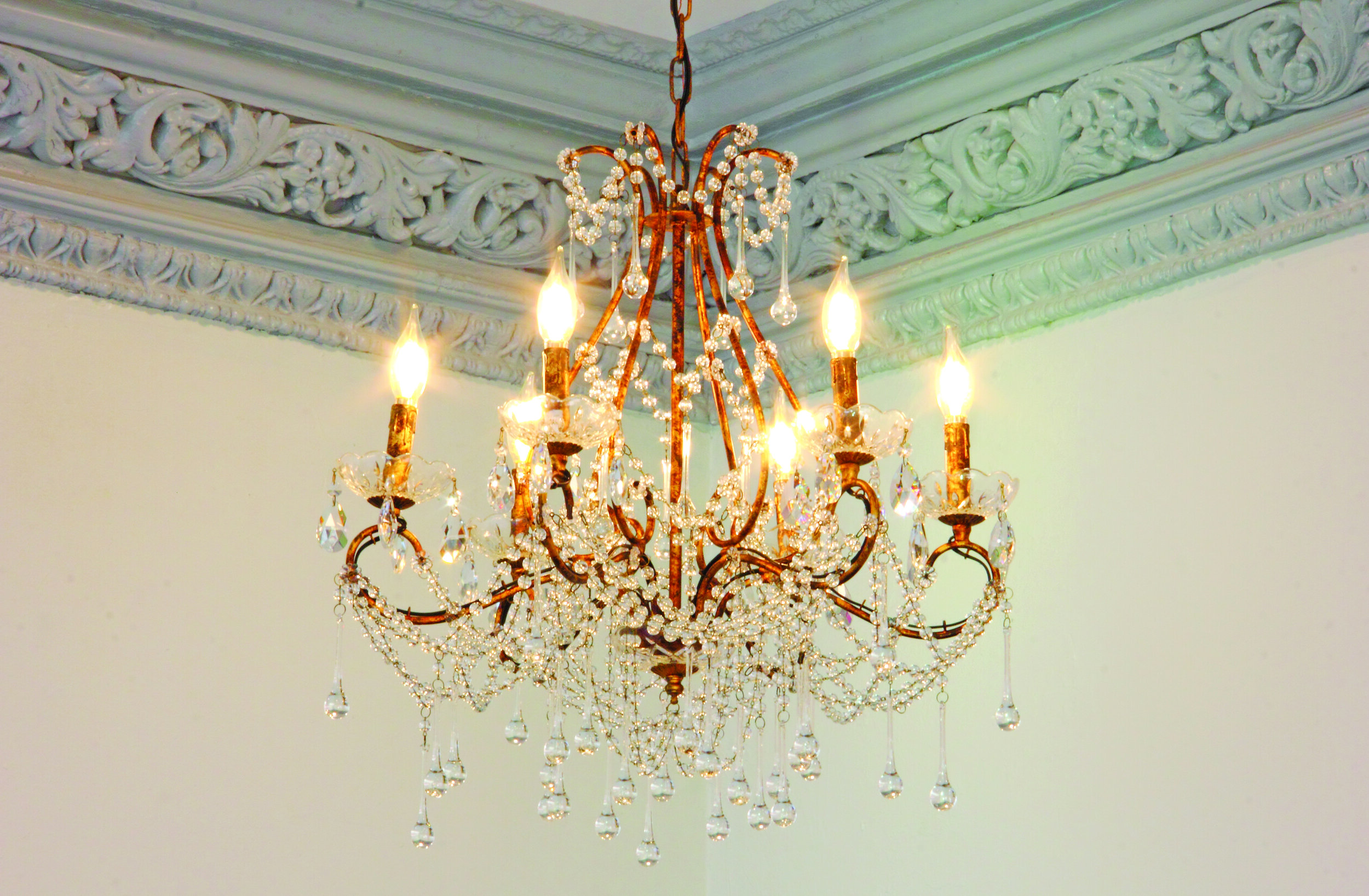
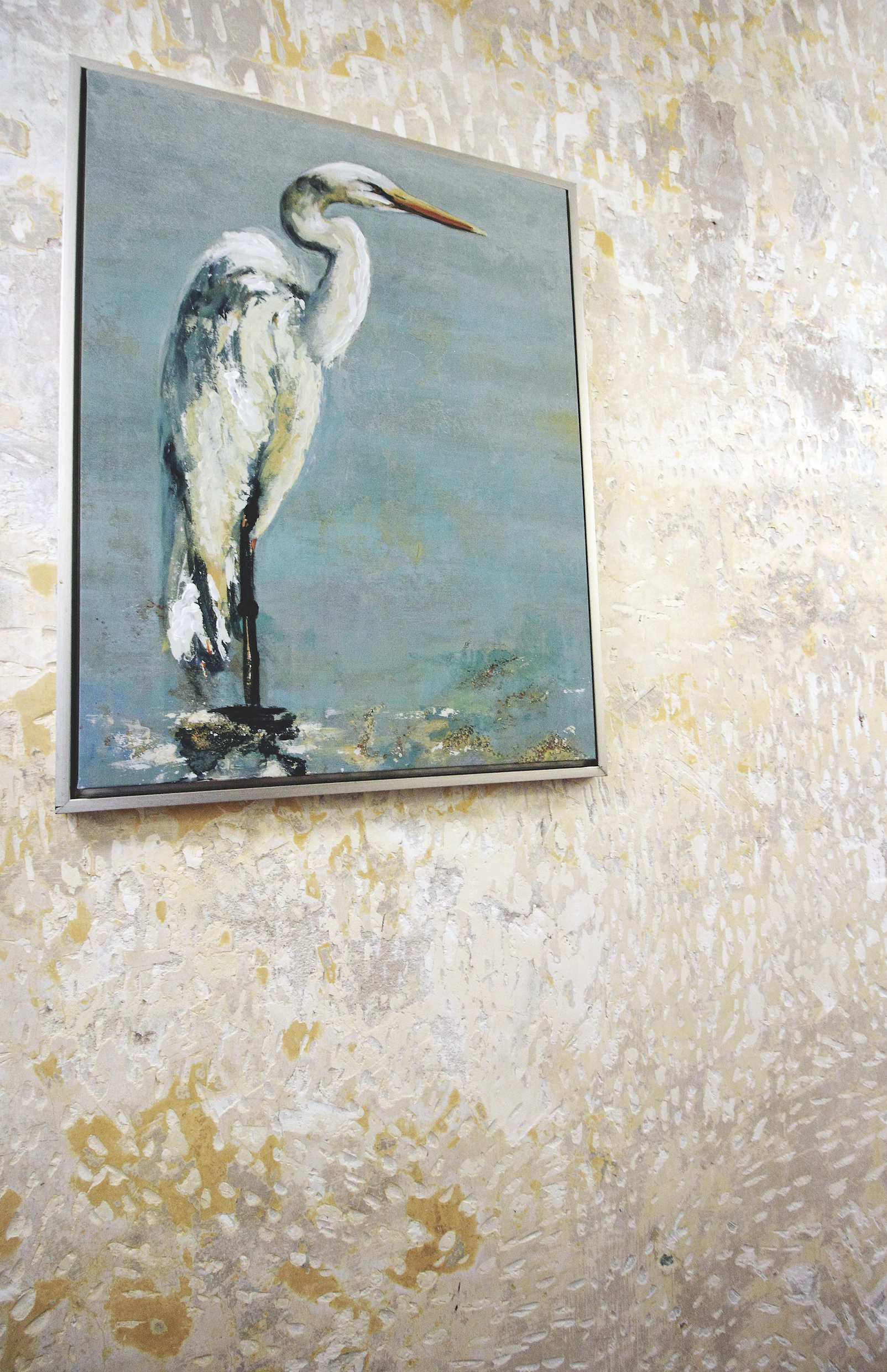

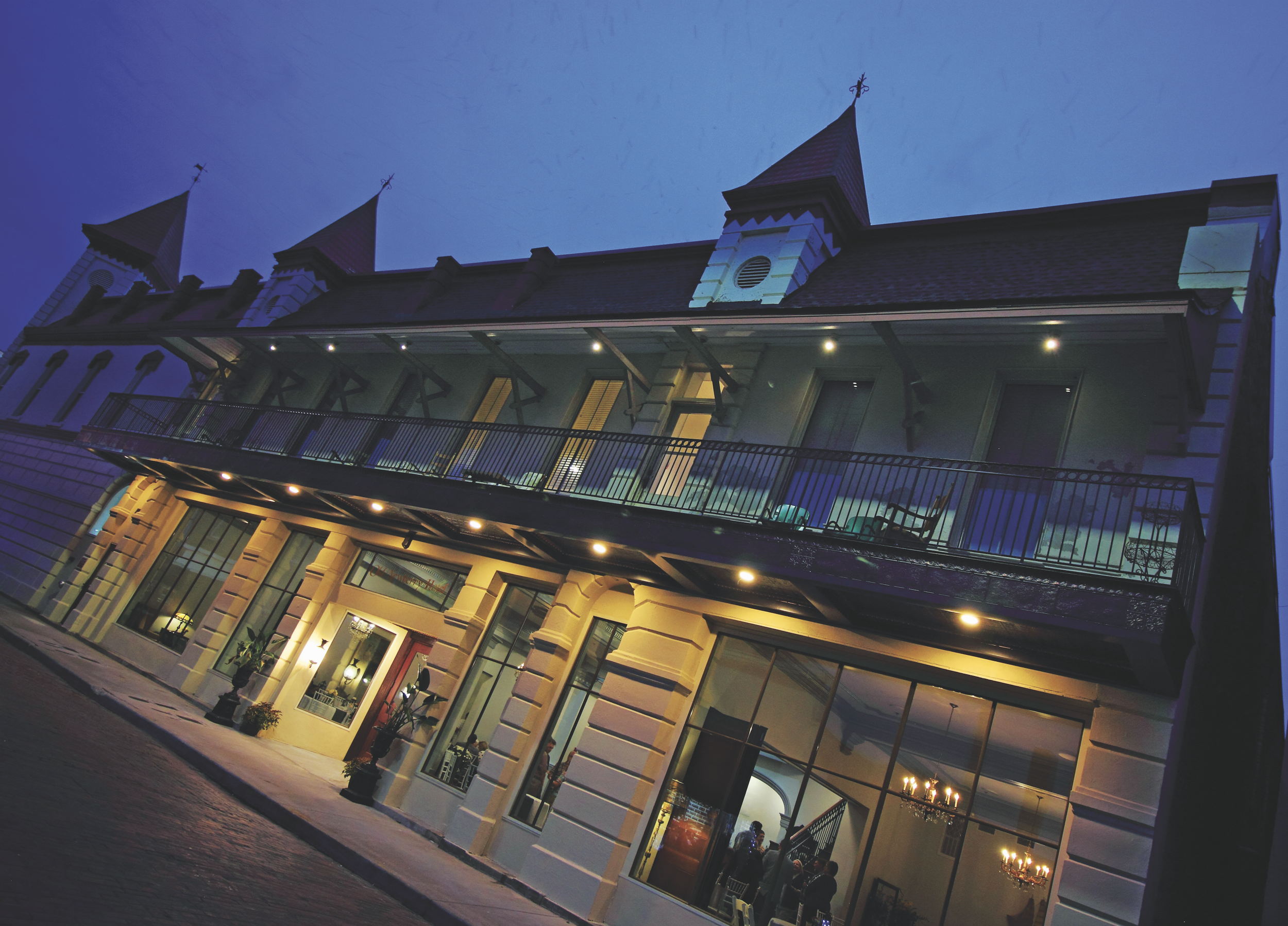
She also insisted that they find a company that could copy the old iron railings, of which they only had a few. An artisan iron work company was found in Columbia also. The new old-railings are beautiful and speak to the history of the building. These railings are a focal point through out the hotel. They are on the atrium level where offices and artists’ studios are located; and on both the front and back balconies, as well as used on the main lobby staircase and other staircases to the apartment level.
Mary and Joe both think this attention to detail highlights the long history of the hotel and is critical to the historic feeling of the building. Joe said, “People ought to know and appreciate living in or visiting this old historic building.” He pointed to an outside plaster wall, “I love this wall left natural. It’s a work of art. That’s history right there in that wall.”
Making all of these decisions—choosing all of the colors, art, furniture, lighting and much more, Mary had done before. However, she had not done them on this scale. Mary said that she has had a great time doing all of it, although at times the number of decisions needed “Right Now!” was overwhelming.
Not only was the scale different, but Mary and Joe were also working with layers of people who all had to learn to communicate with each other. Builders, painters, electricians, architects, engineers of all types, plumbers, the list is long. Everyone will tell you that there have been tough lessons to learn in this long two-year process. Several projects like lighting had to be redone because the decisions had not been communicated to everyone at the right time. Everyone learned on this job.
Mary and Joe also learned to depend on other people’s help. Gayle Metts has been invaluable to Mary and Joe in this long journey. Gayle is now the property manager for the Old Newberry Hotel and works for them. She knows construction. She knows building codes. She knows business. She speaks her mind on their behalf. Mary has also learned to speak her mind on her behalf even though she is often the only woman at the table.
How have Mary and Joe not gone absolutely crazy and kept their spirits up during this seemingly never-ending complicated project?
Mary will tell you it’s the people on Main St that she meets. She remembers a woman she didn’t know who stopped and said, “Thank you so much for what y’all are doing for the old hotel.” This is just one example of many heart-felt words of appreciation.
Joe has renewed his confidence and energy giving tours and sharing their vision with groups like the Young Professionals, Leadership, City Council, and other community groups. Like Mary, he has heard many times: “Thank you for doing this.”
The gratitude of the community is not just for reclaiming the historic hotel with its iconic tower, but for the visual statement of the McDonald’s investment–financially, mentally, and emotionally–in the vision of a flourishing future for our community. One that supports the art-driven renaissance begun by the Newberry Opera House
Renovating a space as old and stripped of its past as the hotel takes not just a vision, but resources and will power. Mary and Joe both admit that, “It also might just take being a little bit crazy.” However, when Joe and Mary look out the new Old Newberry Hotel tower window and see the top of the sister tower of the Newberry Opera House, they know it is a time of recovery and renewal in Newberry. They are glad to be here and a part of it at this moment in time…
It was worth every minute of CRAZY frustration.
Photographs By Ted B. Williams



